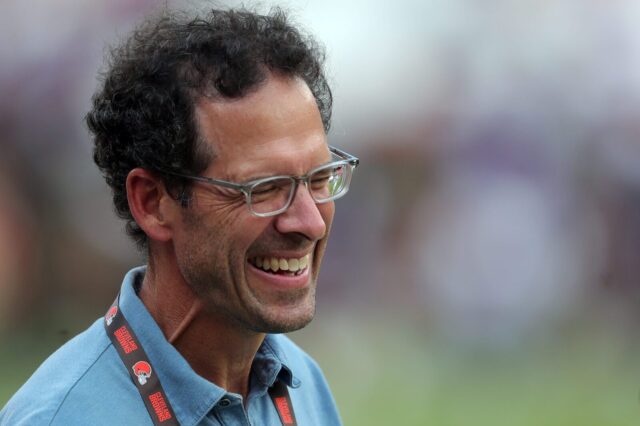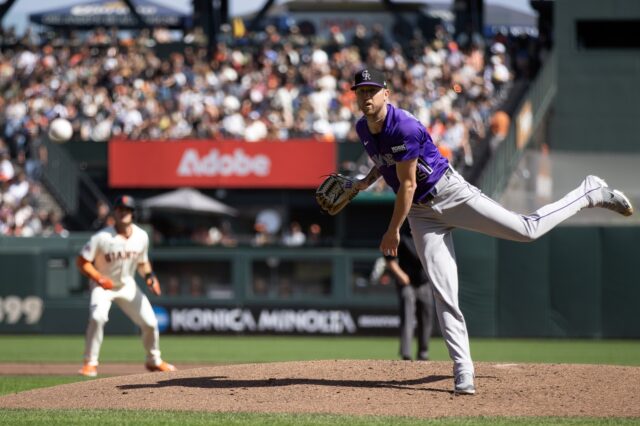As the hoops season ends and the snow finally melts away, the boys of spring take to the diamond and begin what will likely be another often interrupted yet exciting high school baseball season along the Front Range.
Scouts – college and professional – will begin looking for the next Marco Gonzales, while most of the coaches will be thrilled to have two or three kids willing, ready and able to take the mound and deliver strikes on a regular basis. They don’t want three-and-a-half-hour games, either.
By the end of the season, some special performances will have taken place and some of those who weathered the storm on the mound will find themselves among the “prospects” that everyone is looking for and in some cases banking on. The traveling club teams (some of whom offer outstanding coaching and development, by the way) will come calling and everyone will want Johnny Golden Arm to pitch for them early and often, starting this summer…and fall…and winter.
Yes, it’s the start of baseball season. And it’s the beginning of arm overuse season, too.
Arm-overuse injuries are an epidemic that continues unabated, and will until the baseball community unites and puts rules and guidelines in place to curb it. For now, only brave individuals – coaches, parents and players – can slow the epidemic with good choices. Those need to start right now.
First, here’s a tip for the coaches: As practice gets going, don’t ask your newcomers if they have ever pitched or want to. Tell them you need them to give it a try. Encourage. Develop. Coach.
The main problem contributing to arm-overuse injuries in high school is that during a very short 18-game season, coaches typically only end up with two or three kids they trust enough to give the ball to. Too many kids never try to pitch, and therefore never know if they could be decent enough at it to help their team. This is the time to find out. Remember, they call if a pitching “staff” because it should have more than three guys on it.
Just imagine if you were a high school coach and you had developed six decent pitchers instead of three, no one kid would be asked to rack up four-dozen innings pitched in less than two months (and that’s before the longer summer season starts.) As a coach, you’d have a lot more to work with. You’d feel much better about turning your top kids over to a good club program in the summer – where they can try to improve against better competition – while using your own summer season to develop the other three. The way it works (most times) now, there’s a (sometimes contentious) battle between high school summer team and traveling club team for the summer services of those top three kids, and more than a few of them have ended up pitching for two teams in the summer on the QT. Hello, arm surgery.
So coaches need to find more diamonds in the rough starting right now. Encourage, cajole, plead, but get more kids up on the mound and develop a bigger stable of arms. That way, you can stop riding your top two or three kids all the way through the end of the season and into the doctor’s office.
Here’s a tip for parents: Don’t turn your high schooler into a “specialist” who does one thing and one thing only, hopefully well enough to attract attention from the proverbial “next level.” If he’s a hitter or a pitcher, helping him become a more well-rounded athlete is what is best for your son. If your son hasn’t pitched before, encourage him to give it a try. He might be really good at it. And if your son is one of those being counted on heavily to toss as many innings as possible for his school, then please educate yourself, soon. Only you can limit the number of innings and pitches your son throws during the year. Know when to say when. Know when rest in needed.
Scouts – pro and college – don’t want baseball “specialists.” They’re seeking athletes. They want to see kids who can – gasp – play multiple sports at the high school level. Remember, baseball is not a year ‘round sport. It’s more than okay to take a season off. Play basketball or soccer (Yeah, I said it) or lacrosse or whatever will make him a better athlete physically and mentally. If he doesn’t want to play another sport, then have him workout and improve his athleticism with a conditioning coach. Whatever you do, do not let your son get on a pitching mound in the fall if he pitched all spring and summer. His arm needs rest. Those expensive pitching lessons you signed up for (with guys like me) won’t do you any good if your son’s arm is shot by the time he graduates from high school.
Example: Back in the mid 1980s, former CU football coach Bill McCartney gave a scholarship to quarterback/punter Barry Helton from tiny Simla High School because he watched Helton dunk a basketball behind his head. He never even saw Barry play football. And Barry – the guy with a pair of Super Bowl rings – will tell you his best sport was baseball!
So parents, be realistic. Let your child enjoy baseball by not making it a year ‘round task. Those extra hours in the batting cage in November aren’t what is best for his long-term prospects. You may find yourself spending more money on lessons and travel teams than it costs to send your son to a university yourself. (Another tip: College baseball scholarships aren’t all that. Partial grants at best.) And if someone tells you that Tommy John surgery is inevitable and it’s best to just get it over with now, leave that person’s presence immediately and call some sort of help line for them. They’re delusional.
Finally, players: Have fun and be flexible. It’s okay to say your arm needs rest and you want to play first base that day. And if you’ve never pitched before, get up on the mound and give pitching a try. You never know. You might be the next Marco Gonzales.



